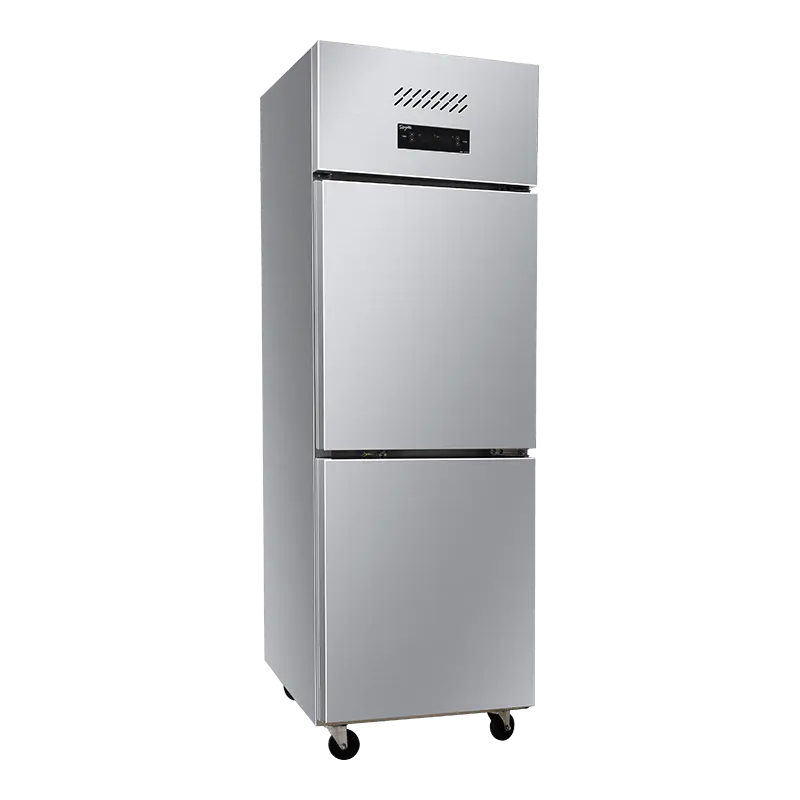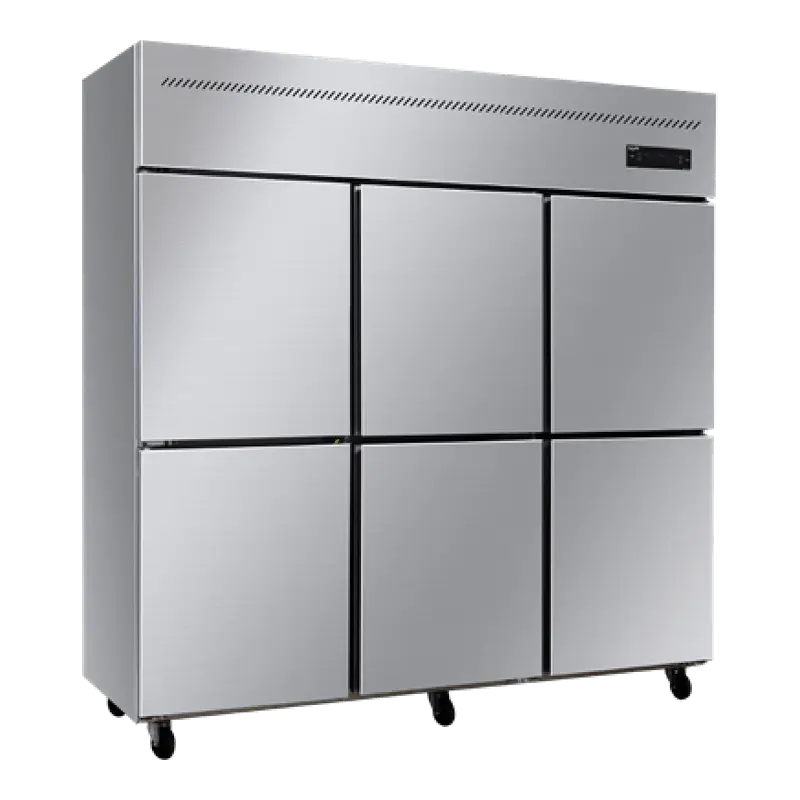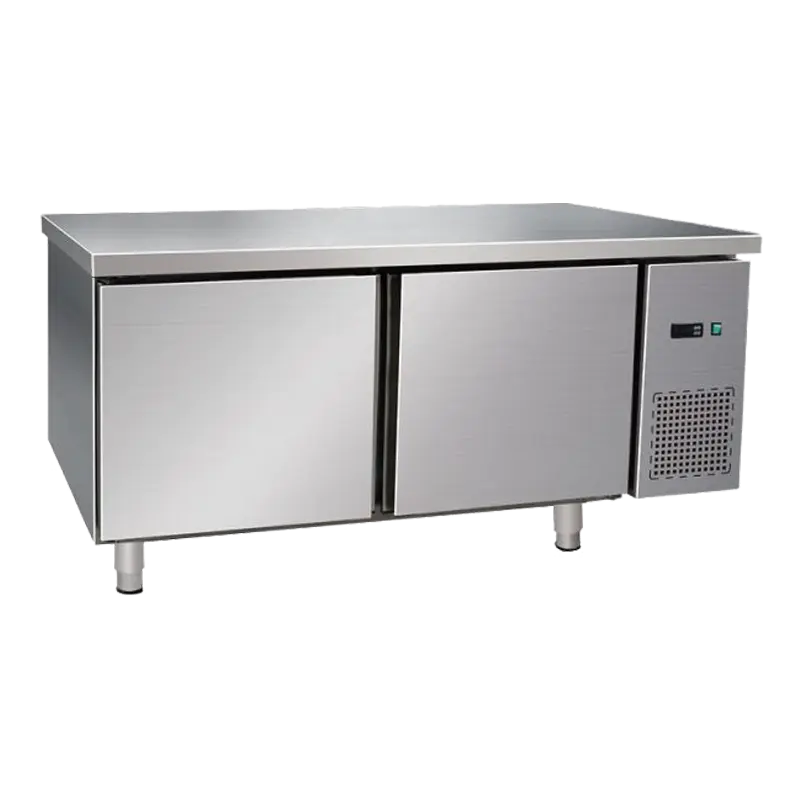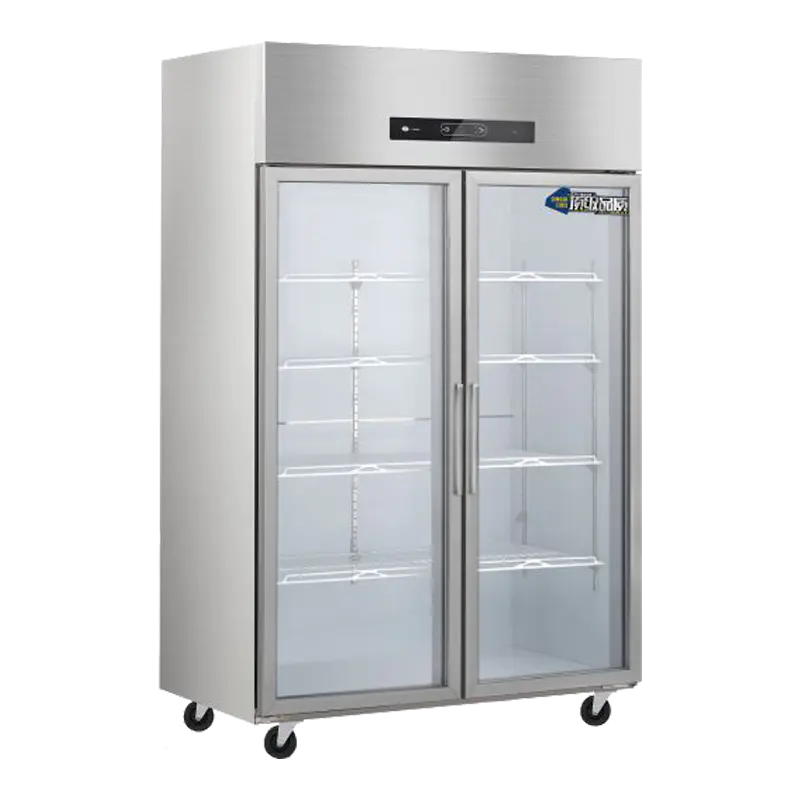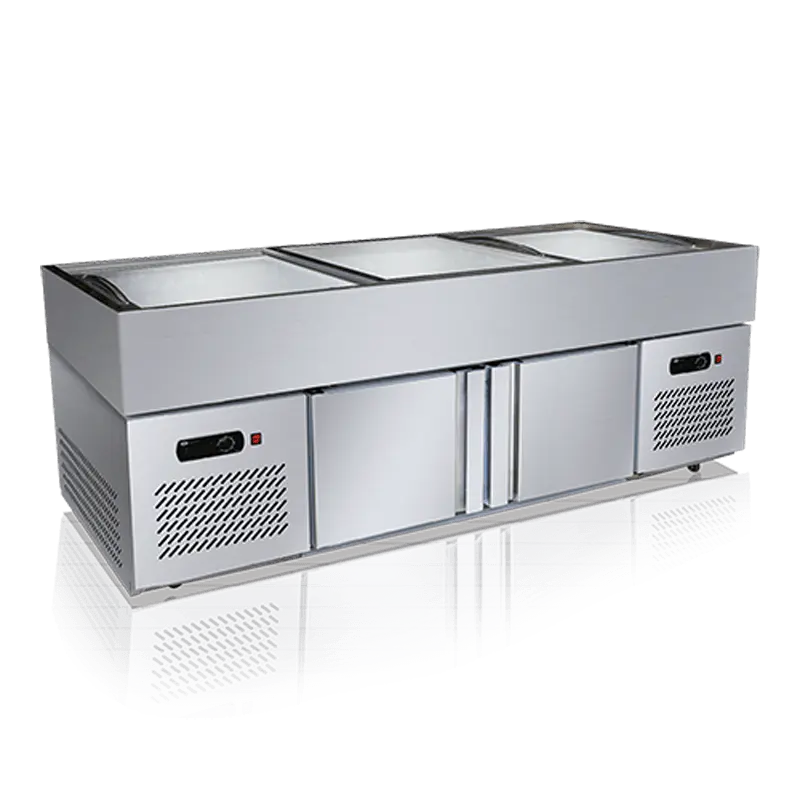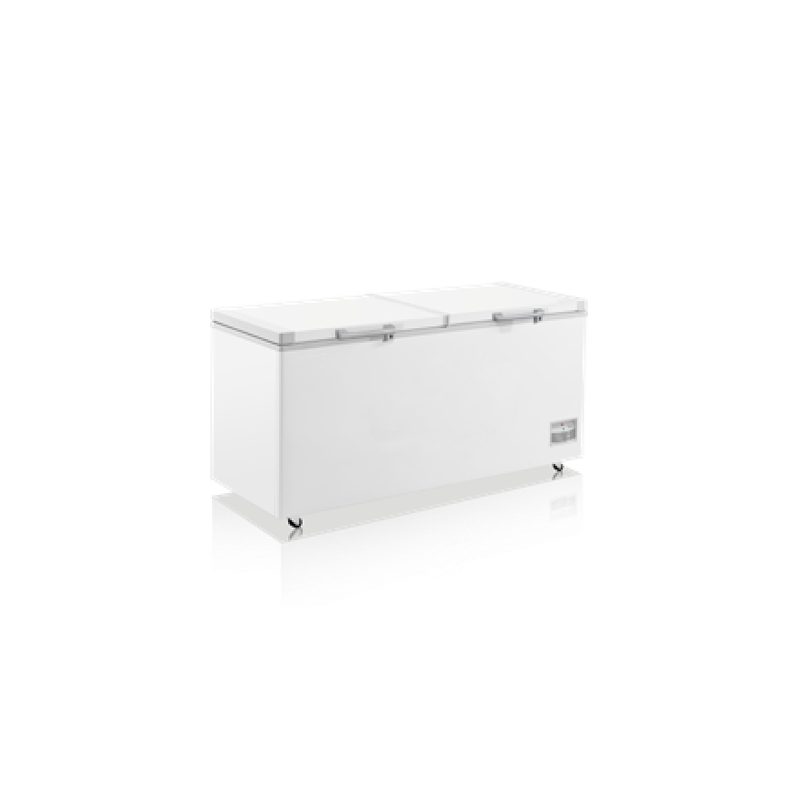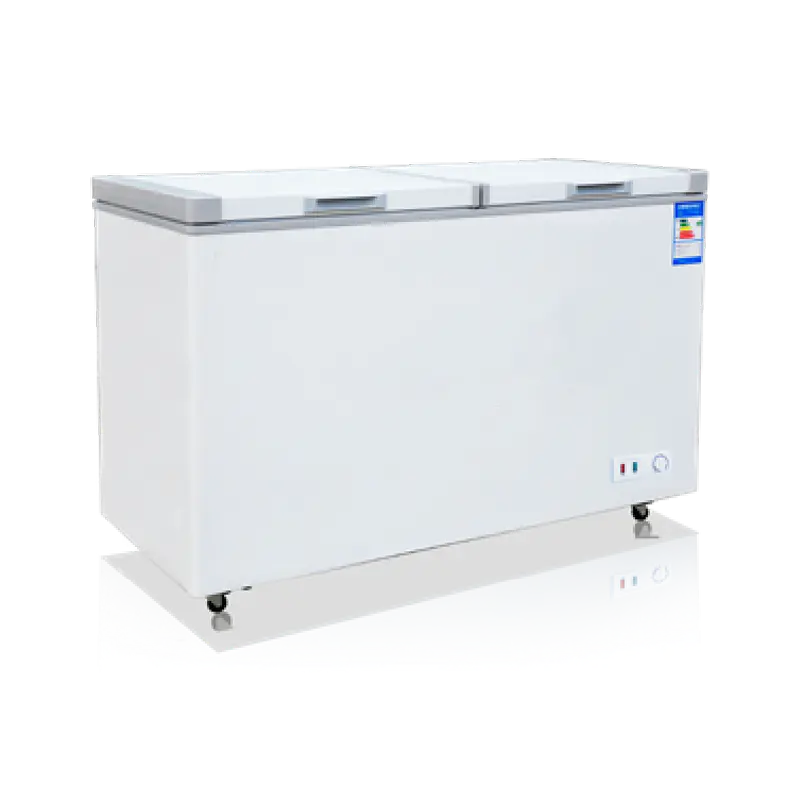Air Curtain Refrigerators: An In-Depth Guide to Open-Front Cooling
How Air Curtain Refrigerators Work in Open-Front Refrigeration
An air curtain refrigerator (often an open-front display case) keeps products cold without doors by creating a controlled “sheet” of chilled air across the opening. This air sheet reduces warm-air infiltration while allowing quick grab-and-go access—critical for merchandising in high-traffic retail.
Core airflow path (what’s happening inside the case)
- Fans discharge chilled air through a top outlet (often a honeycomb/grille) to form a more uniform, less turbulent curtain.
- The air curtain travels downward across the opening and is pulled back into a return grille near the base (or back), completing the loop.
- A refrigerated coil removes heat from the recirculated air; a defrost system periodically clears coil frost so airflow and capacity don’t collapse.
In many commercial cases, typical discharge velocities are designed to be high enough to resist ambient air intrusion but low enough to avoid turbulence and product drying. As a practical benchmark, many open-front designs target roughly 0.3–0.8 m/s at the discharge, with performance highly dependent on store drafts and loading practices.
When Air Curtain Refrigerators Are the Right Choice
Open-front refrigeration is best when speed of access and impulse purchase matter more than maximum thermal isolation. The “right” use case is not just product category—it’s also store environment control.
Best-fit scenarios
- High-turn chilled items (dairy, beverages, packaged meals) where frequent door openings would otherwise cause temperature swings.
- Stores optimizing shopper flow (front-of-store “grab-and-go” zones) where doors create congestion.
- Operations with disciplined closing routines using night covers/curtains after hours.
Where open-front cases struggle
Air curtains are sensitive to ambient conditions. If your sales floor is hot, humid, or drafty, the case will work harder, defrost more often, and may have trouble holding safe product temperatures—especially near the front edge and at the top shelf. Many retailers aim for a controlled sales-floor range (often around 20–24°C with moderate humidity) to keep open-front refrigeration stable.
Common Types of Open-Front Air Curtain Refrigerators
Not all air curtain refrigerators behave the same. Geometry and shelf layout change airflow, infiltration risk, and product temperature uniformity. Use configuration to match your product and traffic pattern.
| Case type | Strengths | Watch-outs |
|---|---|---|
| Vertical multideck | High capacity, strong merchandising, efficient footprint | Top shelf/front edge can warm under drafts; needs correct load lines |
| Semi-vertical / low front | Better access and visibility; often used for produce/deli | More susceptible to ambient air mixing if store humidity is high |
| Open island (horizontal) | Fast shopper access from both sides; good for frozen novelties | Cross-drafts can short-circuit the curtain; plan HVAC and aisle flow |
| Open merchandiser with night cover | Lower after-hours losses; improves stability overnight | Savings depend on consistent use and correct cover fit |
When comparing case types, focus on product temperature uniformity at the “worst spots” (top shelf, front edge, and corners) rather than only the average case air temperature.
Food Safety and Temperature Control in Air Curtain Refrigerators
Because the front is open, open-front refrigeration demands process discipline. The goal is not “cold air,” but consistently safe product temperatures. Most chilled foods are managed to stay at or below 5°C (check your local code and product requirements).
Practical controls that matter more than setpoint
- Load lines: Do not stock above the manufacturer’s airflow/load limit marks. Blocking the discharge or return is the fastest way to lose the air curtain.
- Front-edge discipline: Keep product pulled back from the front lip so the curtain can “seal” to the return grille.
- Receiving temperature: A case cannot rapidly cool warm product. Enforce receiving checks and reject out-of-range deliveries.
- Spot-checking: Use a calibrated probe thermometer on representative items (top shelf and front row), not just the controller display.
If you see repeated warm readings in the same locations, treat it as an airflow problem first (drafts, blocked returns, incorrect stocking), then a refrigeration-capacity problem.
Energy Use: What Drives Cost in Open-Front Refrigeration
Open-front cases inherently fight infiltration, so energy performance depends heavily on airflow stability, lighting, fan power, defrost behavior, and store conditions. Small operational changes can produce measurable savings.
High-impact levers (with realistic savings ranges)
- Night curtains/covers: Often reduce after-hours heat gain; many operators report roughly 10–30% off overnight-related losses when used consistently.
- ECM/variable-speed fans: Fan energy can drop meaningfully (often 15–40% for fan portion) while also reducing case heat load from motor waste heat.
- LED lighting upgrades: Lower watts and less radiant heat into product; commonly yields 5–15% lighting-related savings plus reduced refrigeration load.
- Humidity management: High RH increases frosting and defrost frequency; fewer/shorter defrosts protect both energy and temperatures.
For procurement, prioritize equipment with published daily energy consumption ratings (often expressed in kWh/day) under standardized test conditions, then sanity-check against your store’s actual ambient temperature, humidity, and operating hours.
Spec’ing Checklist: Choosing the Right Air Curtain Refrigerator
Selecting an open-front case is an engineering-and-operations decision. Use this checklist to prevent common mismatches (wrong case for ambient, wrong capacity for product, wrong footprint for shopper flow).
- Define product category and target product temperature (chilled vs frozen) and peak stocking density.
- Document site ambient range (temperature, humidity) and known draft sources (entrances, HVAC diffusers, ceiling fans).
- Select case geometry (vertical multideck, semi-vertical, island) based on traffic patterns and aisle width.
- Require published performance metrics (capacity and energy) and verify defrost strategy matches your humidity profile.
- Confirm controls and alarms support operational accountability (doorless cases need better monitoring, not less).
- Plan for after-hours procedure: night curtain use, cleaning schedule, and restocking windows.
A simple but effective buying tactic: request a layout drawing that includes recommended clearances and “no-diffuser zones” above the opening so HVAC and refrigeration don’t fight each other.
Installation and Store Layout Rules That Protect the Air Curtain
Even a high-quality air curtain refrigerator can underperform if store airflow disrupts the curtain. The most expensive mistake is installing a case where cross-drafts repeatedly “break” the air sheet.
Layout and HVAC best practices
- Avoid placing open-front cases near exterior doors or direct sightlines to entrances where pressure changes and wind gusts occur.
- Keep supply diffusers from blowing into the case opening; even modest drafts can cause warm “wash-in” at the front edge.
- Maintain clearances for condenser/coil airflow and service access; restricted airflow increases energy use and shortens component life.
- Train merchandisers on load lines and shelf spacing; airflow needs predictable paths, not “packed to the glass.”
Operational takeaway: An open-front case is a store-environment appliance as much as it is a refrigeration appliance—coordinate HVAC, layout, and stocking from day one.
Maintenance and Troubleshooting for Air Curtain Refrigerators
Most performance complaints trace back to airflow restriction, dirty heat transfer surfaces, or defrost/drain issues. A predictable maintenance cadence protects both energy and food safety.
| Symptom | Likely cause | First check / action |
|---|---|---|
| Warm product at top shelf | Drafts or blocked discharge | Verify no HVAC blowing into opening; don’t stock above load line |
| Excess frost / frequent defrost | High humidity, poor curtain stability | Check store RH, door proximity, and night curtain compliance |
| Water pooling or leaks | Clogged drain / mis-pitched pan | Clear drain line, inspect pan and trap, confirm defrost drain heater if equipped |
| Noisy airflow / weak curtain | Dirty grilles, fan issues | Clean discharge/return grilles; check fan mounts, bearings, and speed settings |
Minimum routine (practical cadence)
- Weekly: wipe discharge and return grilles; remove debris that disrupts the curtain.
- Monthly: inspect coils for dust and grease; confirm controller sensors are secured and not reading false air streams.
- Quarterly: validate product temperatures across shelves; recalibrate probes if your food safety program requires it.
Questions to Ask Before You Buy or Retrofit
To ensure the air curtain refrigerator you select matches your store reality, push vendors for measurable answers, not marketing phrases.
Procurement questions that uncover real performance
- What is the rated daily energy use (kWh/day) under a recognized test method, and what ambient conditions were assumed?
- Where are the load lines, and what stocking diagram do you recommend for my product mix?
- Which components are high-failure items (fans, controllers, sensors), and what are typical lead times for spares?
- How does the case handle humidity (defrost strategy, drain design, anti-sweat features) in summer conditions?
- What retrofit options are available (ECM fan kits, LED conversion, night curtain system), and are savings validated with before/after metering?
Decision rule: If performance depends on “ideal conditions,” assume you won’t get those conditions. Specify for your worst weeks, not your average day.
Simple ROI Example for Open-Front Refrigeration Upgrades
A quick way to justify improvements is to estimate savings from reduced kWh/day. Example: an open-front multideck averages 28 kWh/day. Adding a night curtain and upgrading to efficient fans reduces usage to 23 kWh/day.
- Daily savings: 28 − 23 = 5 kWh/day
- Annual savings: 5 × 365 = 1,825 kWh/year
- At $0.18/kWh: 1,825 × 0.18 = $328.50/year
If the upgrade cost is $900 installed, the simple payback is roughly 2.7 years (900 ÷ 328.5). Sites with longer closed hours or higher energy rates often see faster payback, especially when improved temperature stability reduces shrink.


 English
English русский
русский Español
Español عربى
عربى

